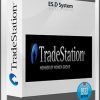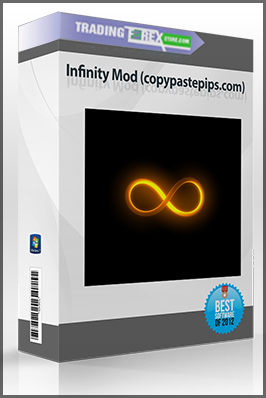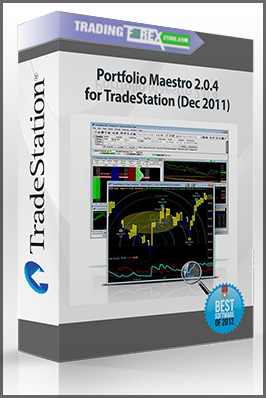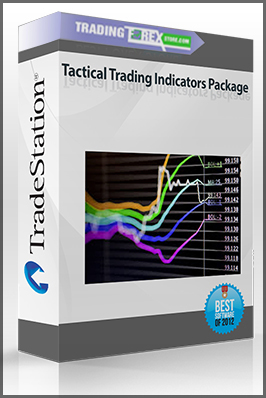Erik Skyba – Swing 5 Relative Strength Index
$19.00
Size: 6 MB
You Just Pay: $19
- Description
Description
Psychologically, one of the hardest things to do as a trader is to buy the dips in the market. It is very hard to will yourself to buy something that is losing money especially in these times. The surprising fact is that many discretionary traders on trading desks around the world subscribe to the idea of not chasing prices higher but buying when prices pull back. These traders many times tend to scale into trades. And while I’ve seen this tactic work in bullish markets, I’ve also seen it destroy trading desks in bearish markets because no one has unlimited capital.
In experiencing these events, I realized that traders were not distinguishing between markets shifts in volatility. These traders were getting caught in the regime switches of the market. These are periods when average volatility levels change. A 5% average volatility becomes an 8% average volatility level and traders don’t adjust their trading for this new increase in risk. A modified version of this approach is the Swing 5 – Relative Strength Index Strategy which acts to enter a trade when the security has had a pull back or has experienced some mean reversion. This pull back is described in the rules of the strategy using the Relative Strength Index, which has a look back window of 5 periods. The strategy employs two separate buy signals based off of two different conditions. Buy Signal 1 is a conditional buy signal that occurs if the close is greater than its 200 day exponential moving average and the Relative Strength Index is less than 30. Buy Signal 2 is another conditional buy signal that has four rules; 1) the close is less than its 200 day exponential moving average; 2) the close is less than the open; 3) the Relative Strength Index is less than 25; 4) the open – close is greater than .70 * the (high – low). The sell signal for this strategy states that the Relative Strength Index has to be greater than the 40 level. The main idea behind this strategy is that we want to buy the market as it has pull back extremes. We also want our trades to be short term and exit our trades as the Relative Strength Index crosses above 40.
In this strategy, we’re trying to take advantage of a move to the downside that has gone too far and too fast. Sellers have panicked pushing prices down and there is no one at least in the short term left to sell. We are also saying with our rules that the return distribution is more normal above the 200 day exponential moving average so our buy signal 1 is less restrictive. While the assumption from just our observations is that when the close is below the exponential moving average the distribution of returns is more in the tails and less in the average so we make the rules more restrictive. This is not to say that the distribution above the 200 day exponential moving average cannot be non – normal. As this idea has not been tested yet – it’s more of an observation at this point. Another safety net for these non – normal return events is that the exit criterion is short term, so that you’re not in the trade too long just in case the market continues reverting to the downside.
Strategy Strengths
The performance over the last 10 years has been consistently profitable, citing 1 year out of 10 that had slightly negative performance – 2001 (-.84).
In regards to the strategies equity curve, the growth is fairly consistent and the equity curve is linear.
The Weekly Underwater Equity looks quite good compared to buying and holding the same security. It was -14.62% for the strategy vs. -55.91% for the Buy and Hold Weekly Underwater Equity. From the Weekly Underwater Equity Curve chart, we can see that there was one week in 2001 where the WUEC was -14.62%. For most other periods the WUEC was above -10.00%.
The positive annual returns during bear markets indicate that the strategy has very low correlation to the markets.
This strategy provided superior Risk Adjusted returns when considering that it outperformed the buy and hold return by about 93%.
A profit factor of 3 means that the strategy won $3.00 for each $1.00 it lost.
The RINA Index which is calculated by taking the selected net profit / average drawdown * % of time in the market had a value of 337.94.
The K Ratio evaluates a system’s consistency of returns over time and was 4.38.
Net Profit / Maximum Drawdown (Intra-day Peak to Valley) or ($182,292 / $38,946) was 3.45, with above 3 being a good value.
Average Profit by Month was positive 11 out of 12 months with July being the worst performing month.
The strategy is only in the market 12% of the time.
Strategy Weaknesses
The strategy has no real position size risk management in place.
Although the rules in theory should help the strategy deal with fat tail distributions the safe guards are not fool proof, obviously. As indicated by the monthly equity curve, the 2001 bear market moves proved difficult for the strategy to handle citing the trade in figure 1.2 which shows a -8.14% loss that really affected the strategies Intraday Maximum Drawdown.















